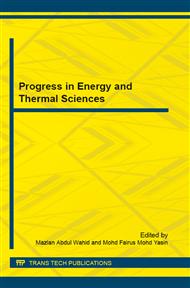[1]
S. Budidarsono, B. Arifatmi, Hubert de Foresta, and Thomas P. Tomich. Damar Agroforest Establishment and Sources of Livelihood "A Profitability Assessment of Damar Agroforest System in Krui, Lampung, Sumatra, Indonesia. International Centre for Research in Agroforestry Bogor, Indonesia. (2000).
Google Scholar
[2]
Rosnah Zakaria and Azizah Hanom Ahmad, The Performance of Modified Silicone-Dammar Resin in Nanoindentation Test, International Journal of Advanced Science and Technology 42 (2012) 33-43.
Google Scholar
[3]
Lakerveld, A van, Price Determination and Upgrading Within the Damar Trade Chain, Thesis, International Development Studies, Amsterdam, (2007).
Google Scholar
[4]
D. Galusek, Z. Lencéš, P. Šajgalík and R. Riedel, Thermal Analysis Study of Polymer-to-Ceramic Conversion of Organosilicon Precursors, Journal of Mining and Metallurgy, 44 B (2008) 35–38.
DOI: 10.2298/jmmb0801035g
Google Scholar
[5]
Tran Thai Bao, Yunkyum Kim, Joonho Lee and Jung-Goo Lee, Preparation and Thermal Analysis of Sn-Ag Nano Solders, Materials Transactions, 51(12) (2010) 2145–2149.
DOI: 10.2320/matertrans.mj201013
Google Scholar
[6]
W. Zhai, W.L. Wang, D.L. Geng, B. Wei, A DSC analysis of thermodynamic properties and solidification characteristics for binary Cu–Sn alloys, Acta Materialia, Elsevier, 60 (2012) 6518–6527.
DOI: 10.1016/j.actamat.2012.08.013
Google Scholar
[7]
L. Nuez-Regueira, C.A. Gracia-Fernandez, S. Gomez-Barreiro, Use of rheology, dielectric analysis and differential scanning calorimetry for gel time determination of a thermoset, Polymer, Elsevier, 46 (2005) 5979–5985.
DOI: 10.1016/j.polymer.2005.05.060
Google Scholar
[8]
Grega Klancnik, JozeF Medved, Primoz Mrvar, Differential thermal analysis (DTA) and differential scanning calorimetry (DSC) as a method of material investigation, RMZ – Materials and Geoenvironment, 57(1) (2010) 127–142.
Google Scholar


